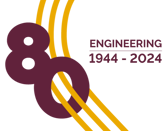A collaborative effort between academia, government, and industry partners has resulted in South Africa’s first conversion of a 65-seater diesel bus into an electric one. This marks an important step in the country’s move towards sustainable transport solutions.
The South African National Energy Development Institute (SANEDI) led the project, working alongside Stellenbosch University (SU), Golden Arrow Bus Services, Rham Equipment, and the Department of Science and Innovation. On 18 October, the bus was handed over to Golden Arrow at an event that also celebrated the opening of SU’s Electric Mobility Lab.
Technical Details of the Conversion
The 2005 diesel bus underwent a complete overhaul, replacing the diesel engine, gearbox, and fuel tank with an electric motor, control systems, and high-capacity batteries. Despite these major upgrades, the bus still weighs the same as the original and has passed road safety checks. It has an estimated range of 200 kilometres, making it a solid candidate for further testing in daily public transport settings.
“This project is a milestone in our efforts to push for cleaner, more sustainable public transport,” said Professor Thinus Booysen, founder of SU’s Electric Mobility Lab. He continued, stating:
“Converting existing diesel buses into electric models shows how we can make electric mobility a part of South Africa’s transport network cost-effectively. There’s no need to invest in a completely new fleet, which also means we’re reducing our environmental footprint.”
A Path to Broader Electric Bus Conversions
SANEDI’s Project Manager, Dr. Neville Smith, added,
“We’re proud to support this project because it could pave the way for large-scale electric bus conversions across South Africa. It’s a promising solution that reduces emissions while building sustainable infrastructure.”
This effort aligns with the country’s goals to cut down on greenhouse gas emissions, reduce pollution, and lessen its reliance on fossil fuels. By converting existing vehicles, this initiative fits within a circular economy model, giving new life to old vehicles. Additionally, it opens the door for retraining automotive workers as South Africa moves toward electric mobility.
For Rham Equipment, a mining company with years of experience in electric mobility, this is an exciting moment. “This project shows our growth into above-ground transport solutions that align with the future of energy and mobility,” said CEO Kevin Reynders.

Fig 1: Prof Sibusiso Moyo, Deputy Vice-Chancellor: Research, Innovation and Postgraduate Studies and co-founder and CEO of Roam, Filip Lövström
Next Steps: Testing and Future Potential
The electric bus will go through rigorous testing in real-world conditions over the coming months. These tests will look at its performance, energy use, and reliability, helping to refine the technology and assess its scalability for public transport. “This collaboration shows how partnerships between SANEDI, Rham, Golden Arrow Bus Services, and SU can drive innovation in sustainable transport,” said Professor Corne Schutte, Vice Dean of Research at Stellenbosch University.
As testing continues, the team behind this project is committed to advancing electric mobility in South Africa and finding more opportunities to modernise public transport.





